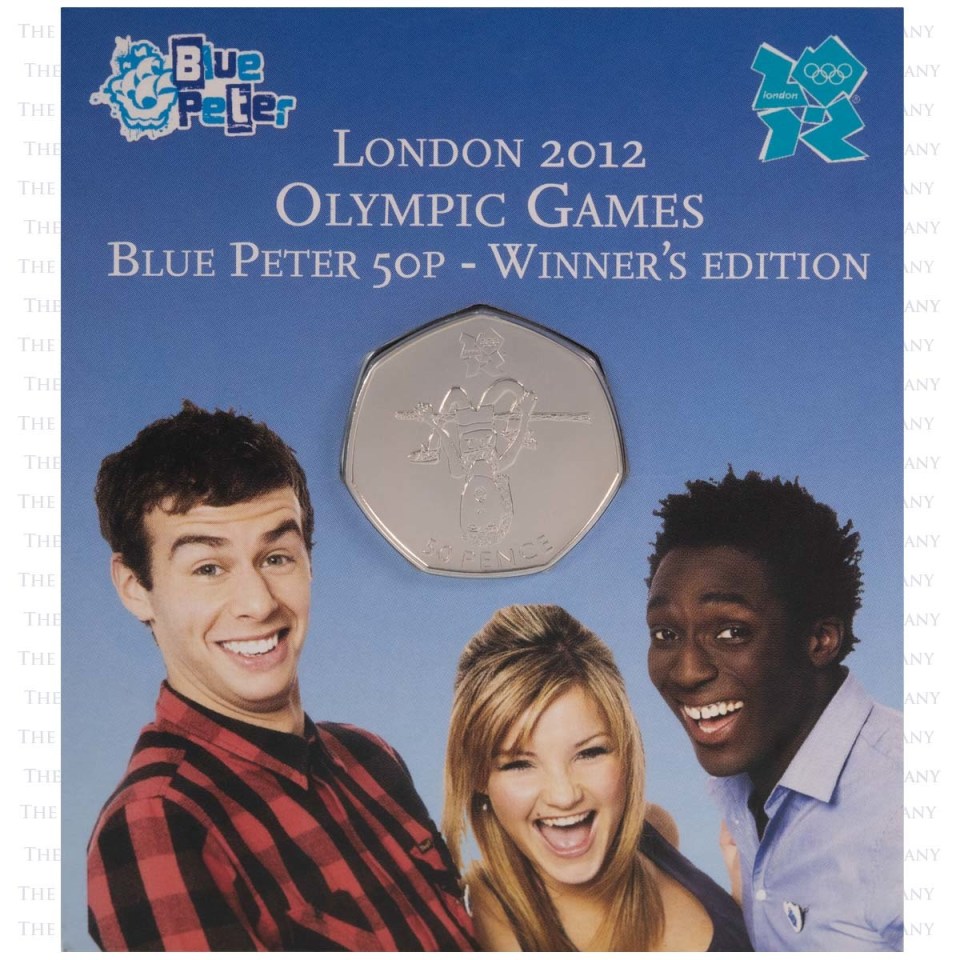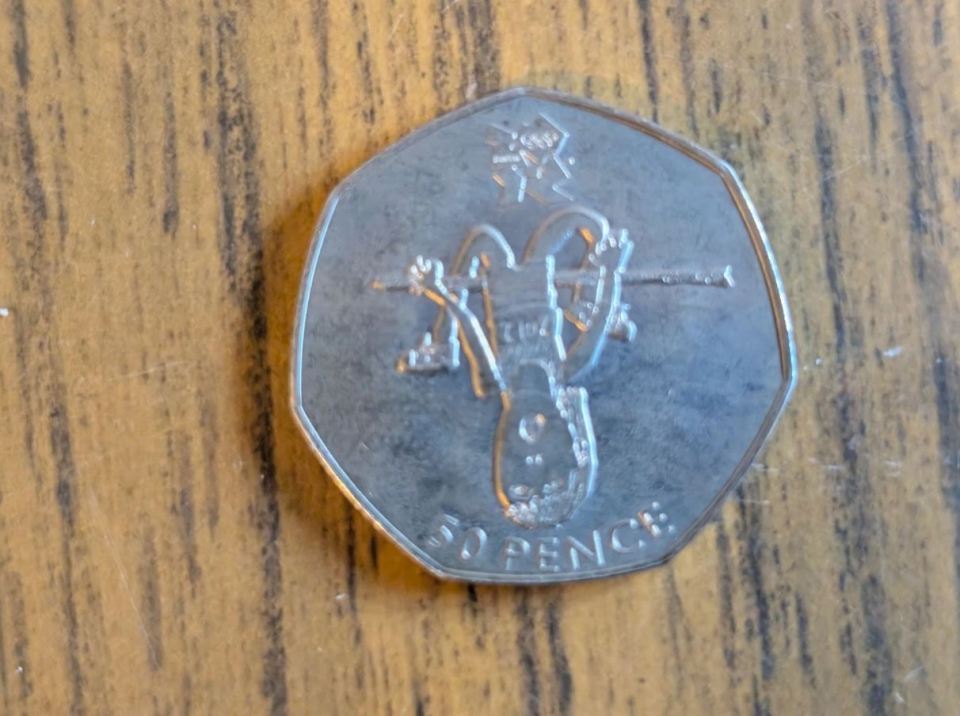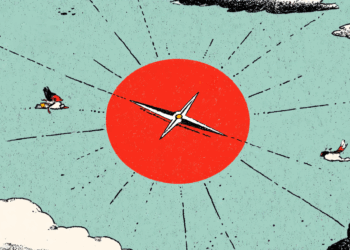A RARE coin has sold for a whopping £165 after a fierce bidding war.
The 2009 Athletics Olympic coin fetched 27 offers but eventually sold for 330 times its face value.
This highly sought-after piece was originally from a Blue Peter pack.
The coin was sealed in a blue card sleeve printed with “Blue Peter 50p – Winner’s Edition.”
The Athletics 50p coins were fairly common, with 2,224,000 issued by The Royal Mint, but only 19,722 Blue Peter branded packs were released.
The design was one of the first of the 29 officially licensed London 2012 Olympics coins.
The Athletics 50p was designed by Florence Jackson, who was eight years old at the time.
The final design was chosen from over 17,000 entries as part of a Blue Peter competition.
The other side of the coin features the late Queen Elizabeth II.
You might even be able to get more than £165 for the coin too.
The piece has previously gone for as much as £262 on eBay after a similarly feisty bidding war.
And according to the Britannia Coin Company website, it’s worth up to £265.
The coin is the same size and weight as a 50p coin found in your change and measures 8g by 27g in diameter.
However, it never actually entered circulation, meaning it has a shinier face than the typical 50p piece.
If you’re collecting coins at home, it’s worth having a look for it.
What makes a coin rare?
Rare coins can sell for thousands of pounds if the right buyer comes along – but what makes a coin rare?
In most cases, a coin with a low mintage figure is classed as rare as there are few of them in general circulation.
You can usually find out the mintage of a coin by checking The Royal Mint’s official website.
A coin may also be classed as rare if there was a mistake made during the manufacturing process.
Coins that have been struck incorrectly are commonly known as “error” coins.
In some cases, there are just a handful of each error coin available to the public making them incredibly rare and valuable.
For example, one error coin dubbed the “lines over face” 50p, has been known to sell for £1,500 in the past.
Meanwhile, a rare 2014 coin could be worth a whopping £1,000 based on the bidder.
How to sell a rare coin
There are three main ways you can sell rare coins – on eBay, Facebook, or in an auction.
If you’re selling on Facebook, make sure you post good quality pictures and price the piece as accurately as possible.
You can find out how much the same coin has sold for on other platforms like eBay to know how to price yours accurately.
Next, you can sell at auction, which you can organise with The Royal Mint’s Collectors Service.
It has a team of experts who can help you authenticate and value your coin.
You can get in touch via email and a member of the valuation team will get back to you.
You will be charged for the service though – the cost varies depending on the size of your collection.
You can also sell rare coins on eBay.
In all three cases, it’s worth bearing in mind, a coin will only sell for what a bidder is willing to pay on that specific day.
How to spot valuable items
COMMENTS by Consumer Editor, Alice Grahns:
It’s easy to check if items in your attic are valuable.
As a first step, go on eBay to check what other similar pieces, if not the same, have sold for recently.
Simply search for your item, filter by “sold listings” and toggle by the highest value.
This will give you an idea of how much others are willing to pay for it.
The method can be used for everything ranging from rare coins and notes to stamps, old toys, books and vinyl records – just to mention a few examples.
For coins, online tools from change experts like Coin Hunter are also helpful to see how much it could be worth.
Plus, you can refer to Change Checker’s latest scarcity index update to see which coins are topping the charts.
For especially valuable items, you may want to enlist the help of experts or auction houses.
Do your research first though and be aware of any fees for evaluating your stuff.
As a rule of thumb, rarity and condition are key factors in determining the value of any item.
You’re never guaranteed to make a mint, however.












